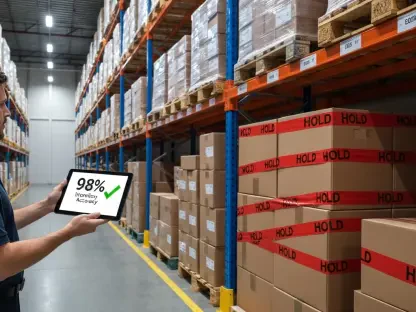The Environmental Protection Agency (EPA) faces numerous challenges in managing its information systems and software asset data, which have been extensively documented in a recent audit by the Office of Inspector General (OIG). A thorough and accurate inventory of these systems is vital for operational efficiency, security, and fiscal responsibility. However, the OIG audit reveals that the EPA’s current practices fall short, leading to unauthorized access and excessive expenditures on software licenses.
OIG Findings and Recommendations
Lapses in Software Procurement and Data Accuracy
One of the primary issues identified by the OIG is the EPA’s failure to maintain complete and accurate inventory records for its IT systems and software. Part of this problem stems from the agency’s software procurement process, which lacks a mandated step for entering purchase record information into the designated management tool. As a result, the EPA struggles to track its software licenses accurately, leading to inefficiencies and potential security risks.
The report underscores the critical need for the EPA to comply with both National Institute of Standards and Technology (NIST) and agency-specific standards. These standards require precise software license data to ensure sound asset management and to prevent the duplication of software purchases. Given the importance of accurate tracking, the OIG recommends that the EPA enhance its software asset management (SAM) procedures to ensure compliance and boost overall efficiency.
Importance of Validation and Coordination
Improving the accuracy of software asset data and IT system inventories is essential for the EPA. This improvement will provide multiple benefits, including enhanced security and reduced wasteful spending. The OIG emphasizes that frequent validation and updates of the system inventories should be conducted by designated officials to ensure compliance with the Office of Management and Budget (OMB) statute and NIST guidelines.
Coordination of software asset data management involves documenting the designated system of record and ensuring that all relevant personnel are informed about this designation. By doing so, the EPA can reduce unauthorized access while streamlining software procurement and installation. Consequently, the agency would be able to optimize its software expenditures and maintain a high level of security across its IT infrastructure.
The Need for Enhanced Accountability
Developing Robust Validation Procedures
To address the identified deficiencies, the EPA must develop robust procedures for validating IT systems and software inventory data. Establishing clear guidelines and accountability measures for personnel involved in software procurement and management is crucial. These guidelines must ensure thorough documentation and validation processes are followed consistently across the agency.
Effective validation procedures are necessary to mitigate risks associated with unauthorized access and excessive software expenditures. By putting in place stringent checks and balances, the EPA can reduce errors and improve the accuracy of its software asset data. Furthermore, these procedures will enable the agency to promptly identify any discrepancies or unauthorized purchases, facilitating quick corrective actions.
Tracking Software Purchase Records and Installations
Coordination between software purchase records and actual installations is another area requiring significant improvement. Ensuring that the software being used is both authorized and necessary can help the agency reduce expenditures and improve operational security. The OIG’s audit suggests that regular audits and reconciliations of software purchases and installations will go a long way in achieving these goals.
To this end, the EPA should integrate its purchasing and installation data streams, creating a single source of truth for software asset management. Such integration would dismantle silos within the organization and provide a comprehensive view of software usage. This holistic approach would not only enhance visibility but also empower decision-makers to make informed choices about software investments and deployments.
Future Steps to Bolster Information Security and Asset Management
Ensuring Comprehensive Security Measures
To enhance information security and asset management, the EPA must maintain updated records and coordinate software acquisition data meticulously. As cyber threats become more sophisticated, the agency’s vigilance in safeguarding its IT assets becomes even more critical. Adopting a proactive stance on security measures will help mitigate risks associated with unauthorized access and data breaches.
Central to these efforts is the need for ongoing training and awareness programs for EPA staff. Regular training ensures that personnel are up-to-date with the latest security protocols and best practices in software management. This proactive approach not only bolsters the agency’s defense mechanisms but also instills a culture of accountability and vigilance.
Addressing Current Accountability Gaps
In addressing current accountability gaps, the EPA must make it a priority to align its software asset management practices with established standards and best practices. This includes documenting and designating its SAM tool as the system of record and ensuring that it is widely recognized within the agency. Clear communication regarding these standards is essential to fostering a culture of compliance and efficiency.
Moreover, periodic reviews and audits should be institutionalized to ensure adherence to established procedures. These reviews will enable the EPA to identify areas for improvement continuously and adapt to evolving best practices in the field of software asset management. By closing accountability gaps, the EPA can safeguard its resources while achieving greater fiscal responsibility.
Conclusion
The Environmental Protection Agency (EPA) faces significant hurdles in managing and maintaining its information systems and software asset data, as extensively detailed in a recent audit conducted by the Office of Inspector General (OIG). Accurate and thorough documentation and inventory of these systems are crucial for operational efficiency, ensuring robust security measures, and exercising fiscal responsibility. However, the audit by OIG has highlighted substantial shortcomings in the EPA’s current practices. These deficiencies have resulted in unauthorized access to information, posing serious security threats, and have led to excessive expenditures on software licenses, straining the agency’s budget. The lapses in proper inventory and management highlight a dire need for the EPA to reevaluate and enhance its data governance strategies to prevent further financial waste and to bolster security. Addressing these challenges is imperative for the EPA to fulfill its mission effectively and responsibly.









